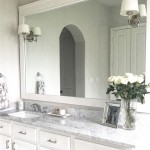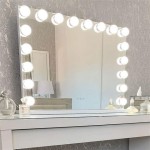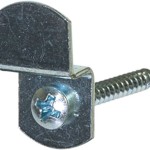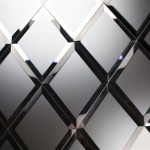Why Is An Image Upside Down In A Concave Mirror?
Concave mirrors, with their inwardly curved reflecting surfaces, possess the fascinating ability to produce a variety of images – real or virtual, magnified or diminished, upright or inverted. The orientation of the image, particularly when it appears upside down (inverted), is a direct consequence of the way light rays interact with the mirror's curved surface and the subsequent image formation process. This article explores the underlying principles of reflection and image formation to explain why images can appear inverted in a concave mirror.
Understanding the inversion phenomenon requires a grasp of a few fundamental concepts in optics. First, the law of reflection states that the angle of incidence (the angle between the incident ray and the normal to the surface at the point of incidence) is equal to the angle of reflection (the angle between the reflected ray and the normal). The normal is an imaginary line perpendicular to the mirror's surface at the point where the light ray strikes it.
Secondly, the principal axis is an imaginary line passing through the center of curvature (C) and the pole (P) of the mirror. The center of curvature is the center of the sphere from which the mirror is a part. The pole is the center point of the mirror's reflecting surface. The focal point (F) lies halfway between the center of curvature and the pole, and it is a crucial point in image formation.
When parallel rays of light, parallel to the principal axis, strike a concave mirror, they reflect and converge at the focal point. This convergence is due to the curvature of the mirror, which causes the reflected rays to deviate inward. This point, where parallel rays meet after reflection, is what defines the focal point of the mirror. The distance between the pole and the focal point is known as the focal length.
To determine the location and characteristics of an image formed by a concave mirror, ray diagrams are employed. These diagrams utilize specific rays originating from the object, whose paths after reflection can be easily predicted using the law of reflection and the properties of the focal point and center of curvature. Typically, two or three specific rays are used:
1. A ray parallel to the principal axis: This ray, after reflection, passes through the focal point.
2. A ray passing through the focal point: This ray, after reflection, becomes parallel to the principal axis.
3. A ray passing through the center of curvature: This ray strikes the mirror perpendicularly (along the normal) and reflects back along the same path.
The point where these reflected rays intersect determines the location of the image. The nature of the image – real or virtual, inverted or upright, magnified or diminished – depends on the object's position relative to the mirror's focal point and center of curvature.
When an object is placed beyond the center of curvature of a concave mirror, the reflected rays converge to form a real, inverted, and diminished image between the center of curvature and the focal point. This inversion occurs because the rays from the top of the object, after reflection, converge below the principal axis, while rays from the bottom of the object converge above it. This crossing of rays leads to the inversion of the image.
Similarly, when an object is placed between the center of curvature and the focal point, a real, inverted, and magnified image is formed beyond the center of curvature. The same principle of ray intersection and crossing leads to the inverted image. The magnification results from the diverging nature of the rays emanating from the object before striking the mirror.
The unique case where an upright image is formed by a concave mirror occurs when the object is placed between the focal point and the pole. In this scenario, the reflected rays diverge, and the image is formed behind the mirror. It appears virtual, upright, and magnified. Because the reflected rays diverge, they do not intersect in front of the mirror. The image is formed by extending these reflected rays backward, where they appear to converge behind the mirror. Since the rays don't actually cross, the image remains upright.
The inversion of the image in a concave mirror, therefore, is a direct consequence of the laws of reflection and the geometry of the mirror's curved surface. The strategic use of ray diagrams reveals how the reflected rays converge or diverge, leading to the formation of images with different characteristics, including inversion. Understanding the interplay of these factors provides a comprehensive explanation for the observed image orientation in concave mirrors.
The relationship between the object's position and the characteristics of the image formed by a concave mirror demonstrates the versatility of these optical elements. Their ability to produce both inverted and upright images, as well as varying magnifications, contributes to their widespread application in various fields, including telescopes, headlights, and shaving mirrors.
Objects In The Mirror Are Actually Images Article Khan Academy
Why Do Some Mirrors Flip The Image Upside Down Quora
Why Do Some Mirrors Flip The Image Upside Down Quora
Objects In The Mirror Are Actually Images Article Khan Academy

Concave Mirror Why Is Your Reflection Upside Down On A Spoon Aumsum Kids Science
Why Do Some Mirrors Flip The Image Upside Down Quora
Why Can We See Our Inverted Image Inside A Concave Mirror When The Is Formed In Front Of It And Not Behind Quora
Concave Mirror Why Is Your Reflection Upside Down On A Spoon Vimeo

Snc2p

Reflections








